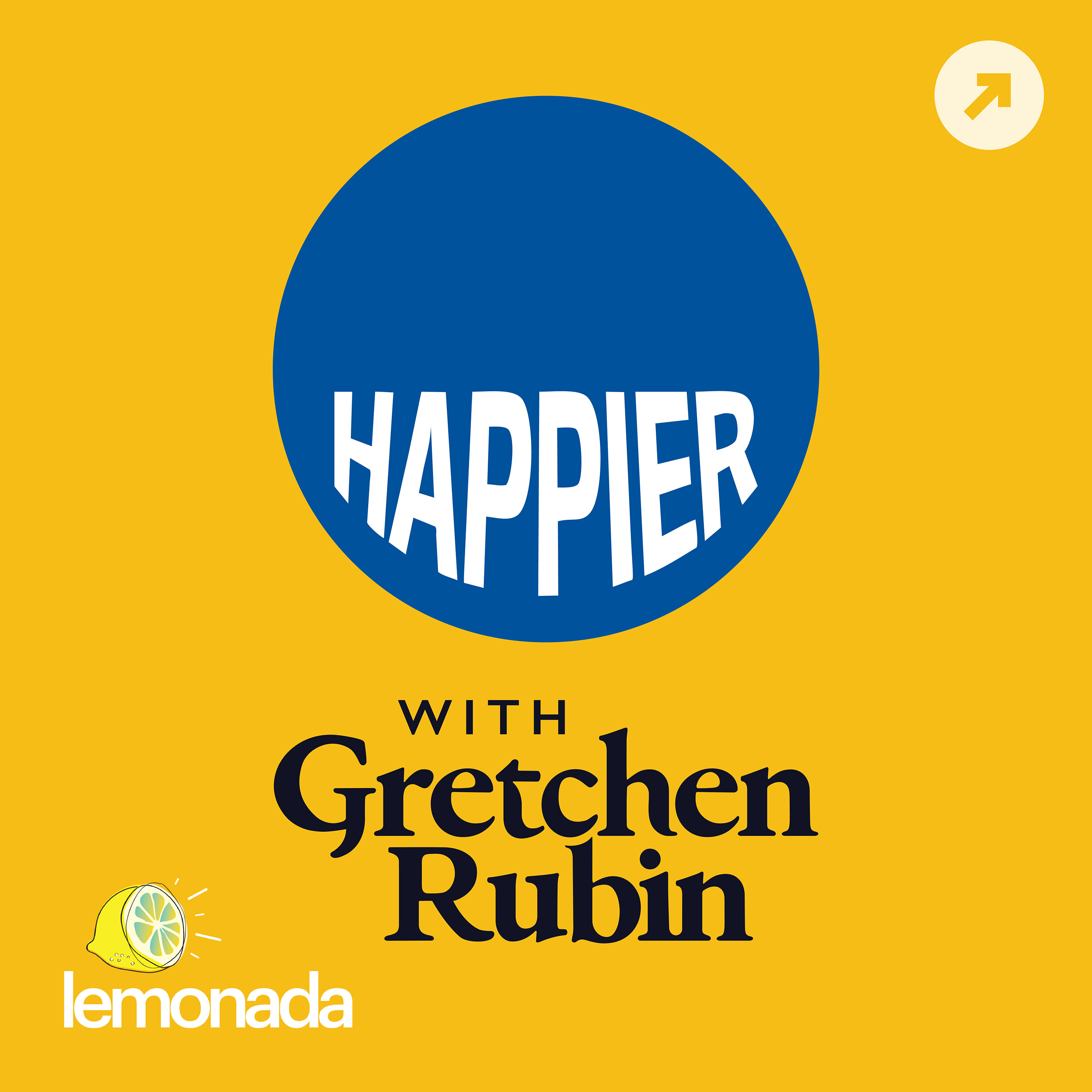Illustrator Quentin Blake drew on the walls of a gallery exhibit—a great reminder that we shouldn’t overlook the possibilities of negative space.
Get in touch: @gretchenrubin; @elizabethcraft; podcast@gretchenrubin.com
Get in touch on Instagram: @GretchenRubin & @LizCraft
Get the podcast show notes by email every week here: http://gretchenrubin.com/#newsletter
Order a copy of Gretchen’s new book OUTER ORDER, INNER CALM here: http://outerorderinnercalmbook.com
Leave a voicemail message on: 774-277-9336
For information about advertisers and promo codes, go to happiercast.com/sponsors.
Happier with Gretchen Rubin is part of ‘The Onward Project,’ a family of podcasts brought together by Gretchen Rubin—all about how to make your life better. Check out the other Onward Project podcasts—Do The Thing, Side Hustle School, Happier in Hollywood and Everything Happens with Kate Bowler. If you liked this episode, please subscribe, leave a review, and tell your friends!
To learn more about listener data and our privacy practices visit: https://www.audacyinc.com/privacy-policy
Learn more about your ad choices. Visit https://podcastchoices.com/adchoices
See omnystudio.com/listener for privacy information.

I’m always looking for a great podcast to listen to, and my mother told me that the legendary BBC radio show Desert Island Discs was available as a podcast. What a treasure trove! There are more than two thousand episodes.
If you don’t know the premise, on this show, celebrated guests are interviewed and asked, “If you were a castaway on a desert island, what eight ‘discs’ (or songs), one book, and one luxury would you take with you?”
I’m a huge fan of children’s literature, so of course, I’m familiar with the work of Quentin Blake, whom I know best for his illustrations for Roald Dahl. I decided to listen to his interview, which originally aired in 2006, and I was very struck by a story he told.
He was invited by the National Gallery in London to put together an exhibition called “Tell Me a Picture.” He decided to bring together the worlds of fine art and illustration to help children see in great artworks the kind of art they’re familiar with from picture books.
What was interesting to me was that he was allowed to draw all over the walls. The pictures were hung, and he drew on the walls behind them. I looked up photos online, and it looked wonderful.
This approach interested me tremendously, because I’ve been thinking a lot lately about negative space. In art, “negative space” is the space around a subject. It’s not the subject itself, but everything that’s not the “real” subject.
It’s very easy to ignore negative space. Our attention is fixed on the positive space.
Back when I was visiting the Metropolitan Museum every day, I kept thinking about the negative space of that space—like the stairwells, the restrooms, odd little forgotten dull corners. I kept thinking, “Boy, they should do something interesting with this space. It’s the Met!”
For instance, I’m a huge fan of the masterpiece of children’s literature, E. L. Konigsburg’s From the Mixed-up Files of Mrs. Basil E. Frankweiler. In the book, two children run away from home to live in the Met. On their first day, when they arrive with the things they should’ve been taking to school, they have to hide their belongings in the museum. If I were the head of the Met, I’d create a permanent acknowledgment of From the Mixed-up Files. I’d stash a violin case and a trumpet case in some hallway corner or under a stairwell. I can only imagine the great pleasure visitors would feel, spotting them there.
There’s also negative space outside the Met. The front of the museum is grand and gorgeous, with a beautiful set of stairs, carvings, fountains, rows of trees, banners, and light. On the back of the building, the side that faces Central Park, there’s an enormous wall that looks like, well, the forgotten back of a building. Why not do something with that?
These days, I’m trying to look behind the obvious, I’m trying to see the negative space, as well as the “negative time.” As Quentin Blake found, it offers tremendous opportunities, if we remember that it’s there.
It’s easy to overlook the possibilities of negative space, but they’re there.
